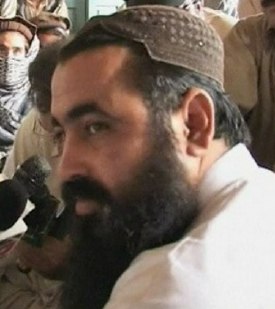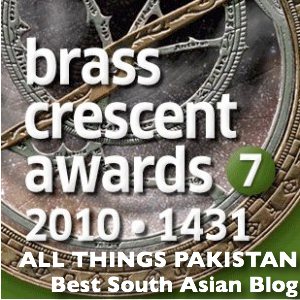Adil Najam
 Although not yet confirmed, all indications suggest that it is more likely than not that Baitullah Mehsud – the leader of the Taliban in Pakistan – has been killed.
Although not yet confirmed, all indications suggest that it is more likely than not that Baitullah Mehsud – the leader of the Taliban in Pakistan – has been killed.
The obvious question being asked right now is: Is he really dead?
The more important question that should also be asked, one this is confirmed, is: If he is dead, then what?
Baitullah Mahsud had become the visible (without really being visible) name to identify with the Taliban’s war on Pakistan. Even if deaths that he and his organization claim (proudly) to have been responsible for are counted, he has been responsible for killing more Pakistanis (nearly all Pakistani Muslims) than just about any other enemy of Pakistan in recent years.
But that does not mean that his departure alone would bring an end to the Taliban war on Pakistan.
Who will rise next? Do we know what the next level of the chain of command is? Do we know where? Do we have a strategy to deal with them before they, too, become larger than life?
All these, and many more, questions remain.
Also, there are questions about the US drone attacks. If, indeed, he was killed in a US drone attack, does that change Pakistanis’ views on the drone attacks? And, if it turns out that he has, in fact, not been killed, how does that change the US-Pakistan politics of drones?
Many questions deserving of answers. Any thoughts, dear readers?
By way of background, here is a profile of Baitullah Mehsud, from Dawn:
Born in 1972, Baitullah Mehsud had to suffer an early childhood dislocation when he moved, along with his father, from his Nargosha village to Landi Dhok in Bannu, close to the South Waziristan tribal region. His father served as a Pesh-Imam (prayer leader) in a mosque in Landi Dhok before moving to Miramshah in North Waziristan and there also he led prayers in a mosque. Baitullah got a little religious education in Miramshah’s Pepal Madressah.
And it was in Miramshah where Baitullah is believed to have come into contact with Taliban militants who persuaded him to join them in the fight against the Northern Alliance in Afghanistan. He fought well in Afghanistan and established himself as a fighter, a senior security officer, who himself belongs to the Mehsud tribe, recalled.
Baitullah returned to his native South Waziristan after the United States invaded Afghanistan and toppled the Taliban regime in November 2001. He shot to prominence after the notorious Taliban commander in South Waziristan, Nek Mohammad, was killed in a missile attack in Wana in June 2004. But he kept a low profile when the one-legged former Guantanamo detainee, Abdullah Mehsud, reined supreme in the Mehsud territory. His real chance to claim leadership came soon after Abdullah kidnapped two Chinese engineers in October 2004. Miffed that the fiery militant commander had picked up an unnecessary fight with Pakistan’s security forces, a shura of the local Taliban removed Abdullah Mehsud and handed over the command of the Taliban in South Waziristan to Baitullah.
Known for his cool-headedness, the military hailed Baitullah’s ascension, called him a soldier of peace and signed the Sara Rogha agreement with him in February 2005. The peace agreement collapsed in a matter of months, with both sides accusing each other of violating its terms, leading to the beginning of hostilities that took a huge toll. Baitullah proved himself a tough warrior, taking due advantage of a territory that was native and treacherous, by defeating two successive military operations.
He catapulted to the limelight when he took hundreds of Pakistani soldiers hostage in August 2007. It was perhaps because of this singular feat that militants in the length and breadth of Fata at a 20-member shura meeting chose him as leader of the Tehrik-i-Taliban Pakistan in December 2007. Baitullah unleashed a wave of suicide bombings in Pakistan. Army Chief Gen Ashfaq Parvez Kayani once told journalists that the TTP leader was behind almost all attacks inside Pakistan. According to a UN report, Baitullah was behind 80 per cent of the suicide bombings in Afghanistan.
He gained in stature to the extent that Time magazine rated him as one of the 100 most influential people in the world. Not to be left behind, Newsweek described him as more dangerous than Osama bin Laden. Accounts vary about the actual strength of his force, but intelligence agencies put the number of his fighting force at 20,000 to 30,000, including 2,000 to 3,000 foreign militants, mostly of Central Asian origin – Uzbeks and Chechens. He ran a number of training camps, including those indoctrinating suicide bombers – a weapon – he once called his own atom bombs.
A short-stocky man, Baitullah suffered from diabetes that once prompted reports of serious illness and then death in late 2008. Much to the disappointment of many, the man bounced back to host a big feast of lamb and rice to celebrate his second marriage to a daughter of the local influential tribal leader, Malik Ikramuddin. He, however, remained issueless. According to one account, he was also the ghost writer of a book in Urdu, Carvan-i-Baitullah Mehsud, using the pen-name of Abu Munib. In the book, he described his ideology, war strategy and details pertaining to his movement. The United States had announced a $5 million bounty on Baitullah’s head in March this year. But it took Pakistan several months before making up its mind to declare him as Pakistan’s enemy number one and announce a reward of Rs50 million for his capture, dead or alive, in June.
Trouble began to emerge for the TTP leader when the government announced the launching of a military operation against him in June. No ground offensive was launched and the government changed its tactics to use air strikes and artillery, besides imposing an effective economic blockade to stop fuel and food supply to the area. Thousands of Mehsuds fled the area. He was under pressure both from within his own Mehsud clan, which wanted him to ease it off with the government, and his commanders who egged him on to fight off the military. For the first time, his decision and thought-making process was shaky, an official familiar with the situation in the area said.
He wouldn’t stay in one place for two months and would constantly change places. His nerves were on edge, he remarked. It is useless to run away. I know some day, one day they will come and get me, one senior official quoted Baitullah as telling a fellow Mehsud tribesman. Little did the man, described by a senior security official as someone with fox-like instincts to sense danger, suspect that he was exposing himself to a missile target by relaxing with his younger wife on a roof in Zanghara, South Waziristan.



















































I am quite on topic. I gave the news reference which were relevant to Mehsud’s link with India and US. If you can’t grasp it then it’s not my fault. Pls do read the stuff before making a comment.
Offcourse! Pakistan’s success solely depends on getting rid of fascist elements of both left and right elements. I hope the day will come when we will get rid of fascist secular elements like Musharraf,Altaf, Zardari and their “supporters”. But the question is..,is he Dead?
I read a cutting that US is happy after “split” between Talibans. I don;t know why US is happy but for Pakistan it’s more dangerous as fight between different groups could create more problem in Pakistan. As Kamran Khan reports that Mehsud had lots of money which was funded by “external sources” which I mentioned above and other guys fought to grab the money and lots of weapons, this “internal” fight would be more dangerous for Pakistan
Wow, here is an even more interesting news report from THE NEWS:
————————
A desperate wish for a son may have led to the death of Pakistani Taliban leader Baitullah Mehsud, a British newspaper reported on Sunday.
Mehsud was spending the night with his second wife in village Zangarha on Wednesday when he was killed in an American drone attack, the Sunday Times said. It said the 35-year-old Mehsud, who has four daughters by his first wife, took a second wife, the daughter of an influential cleric, last November.
The paper said the diabetic Mehsud, who had been feeling
Very interesting report in THE NEWS. Worth Reading:
—————
bloody feud that followed Baitullah Mehsud
@Zecchetti
I agree with you. The picture of the man standing in green jacket looks more to me like Hakimullah Mehsud. Hopefully he is also dead if the latest news about shootout at Taliban shura is to be believed
Am I the only one who thinks the baitullah mehsud in the first picture looks like someone completely different the the guy with the long hair in the second picture? Look at the eyes: completely different!
What’s going on?